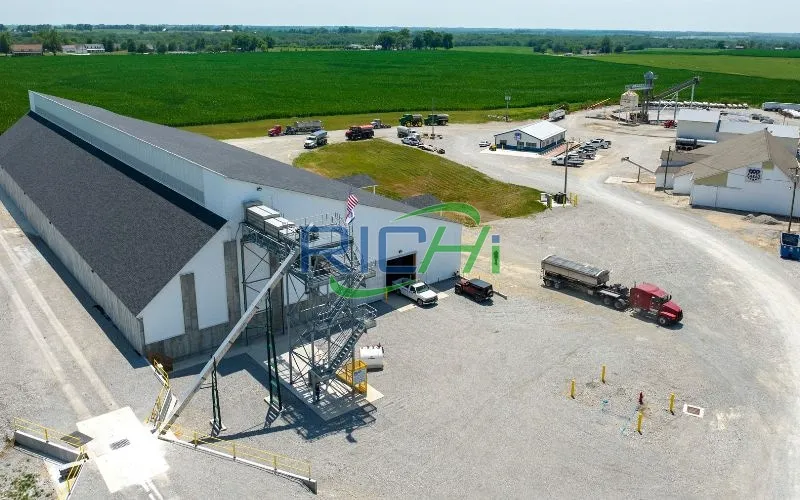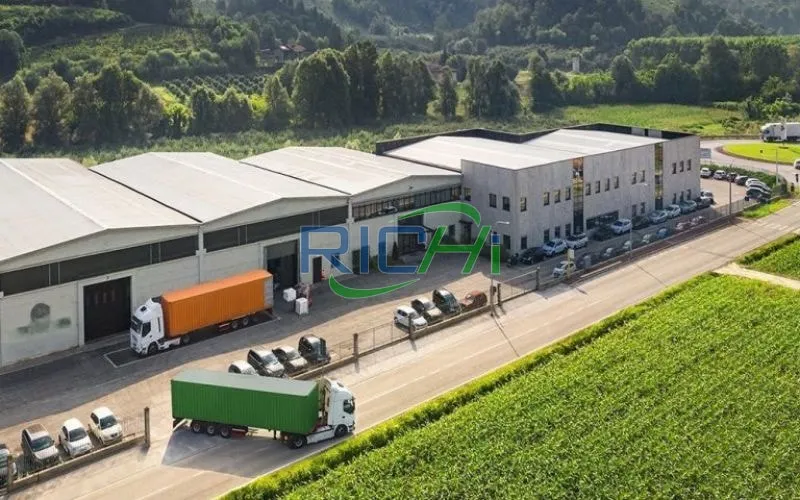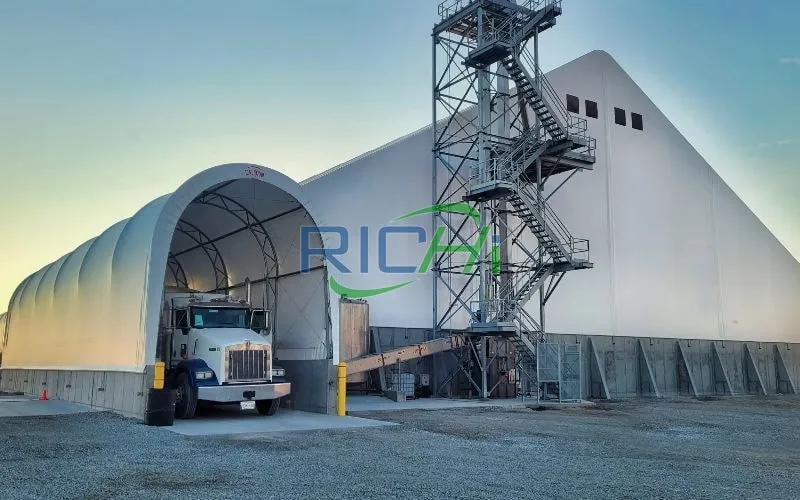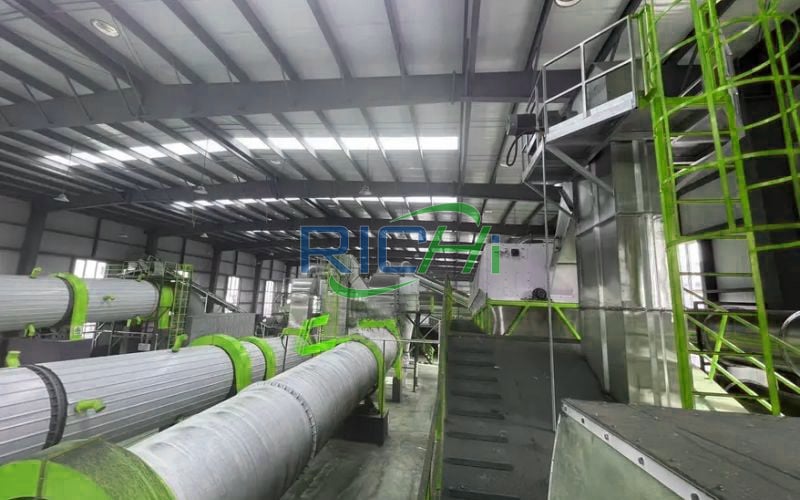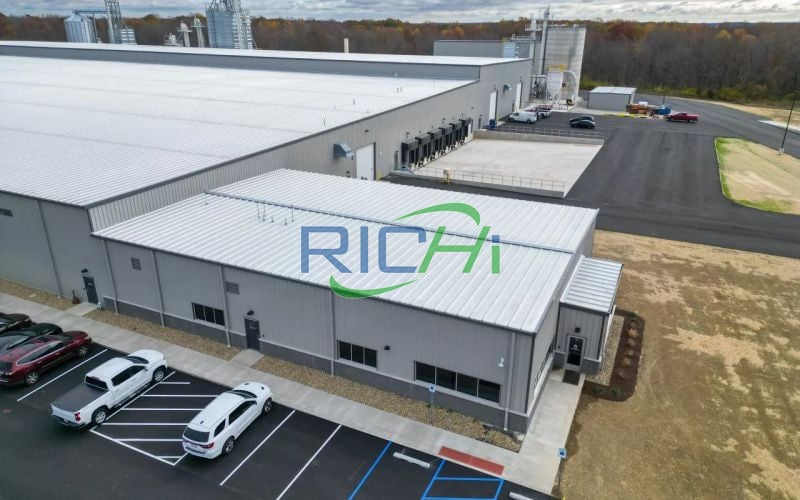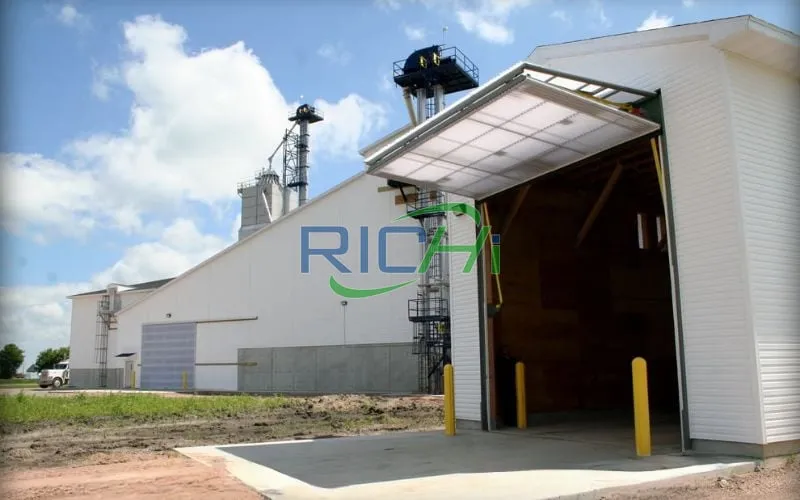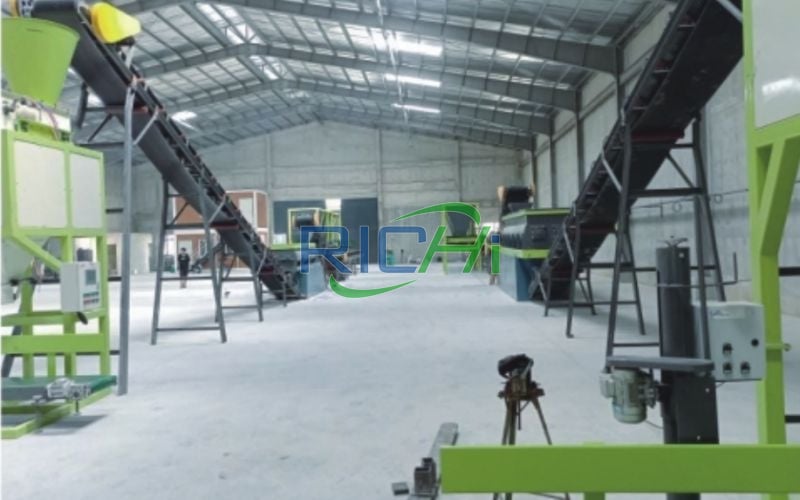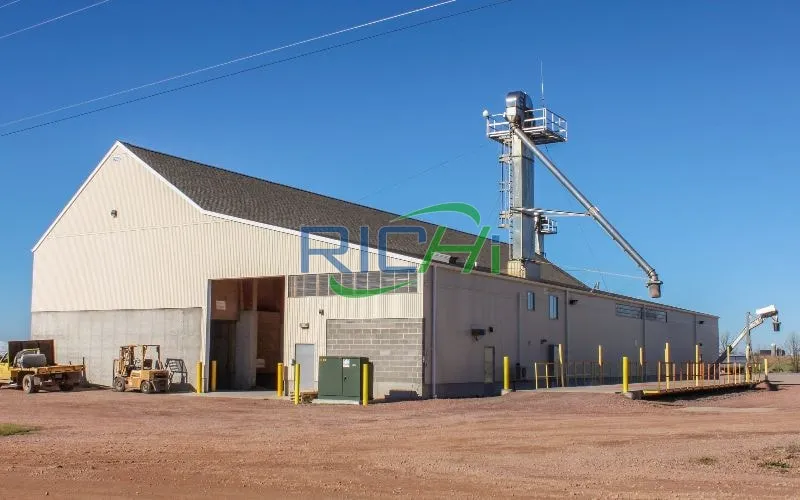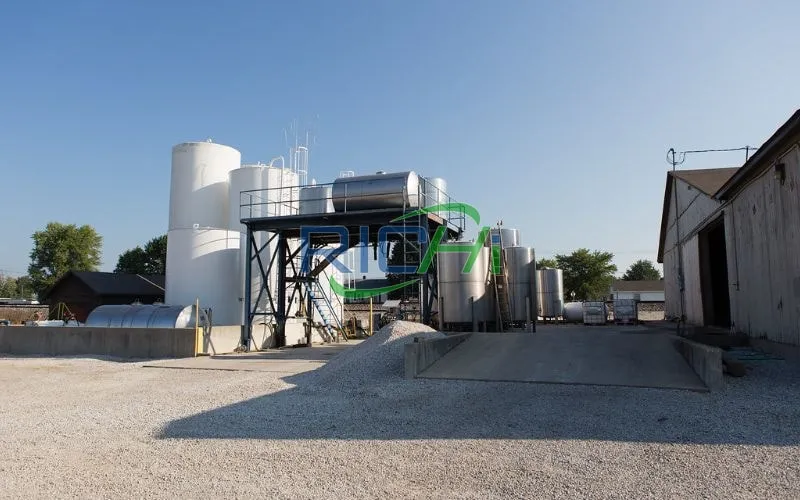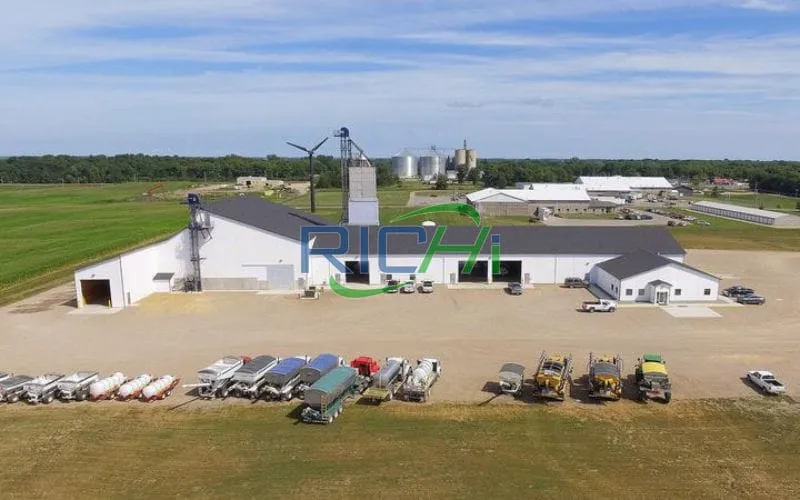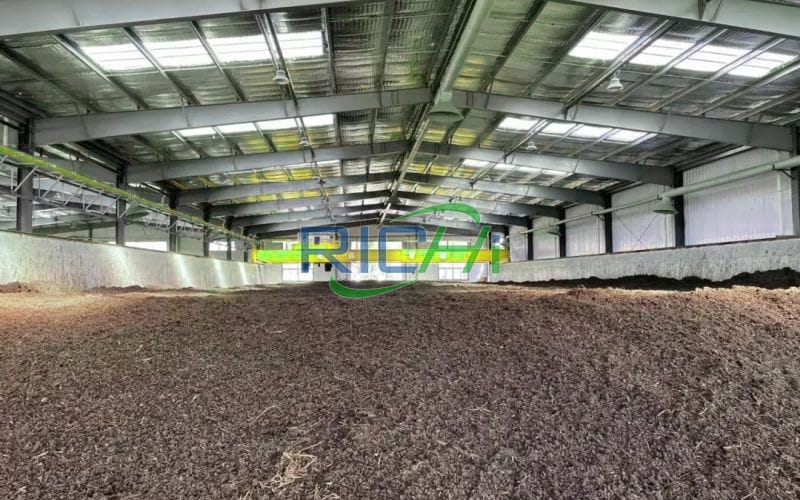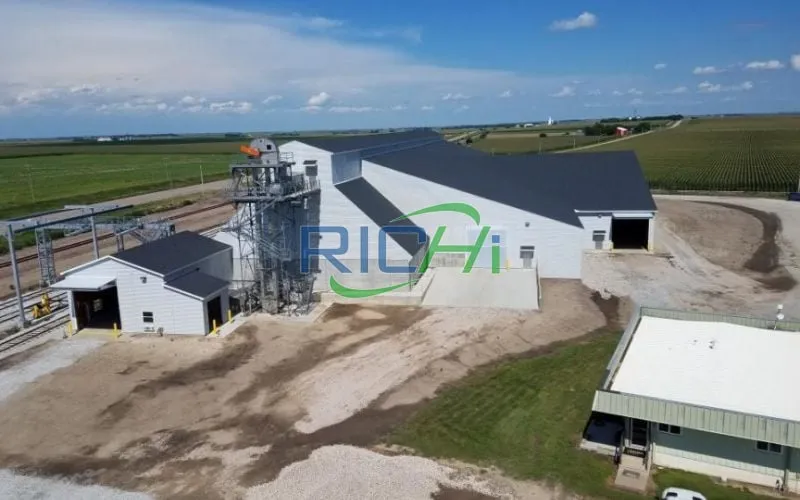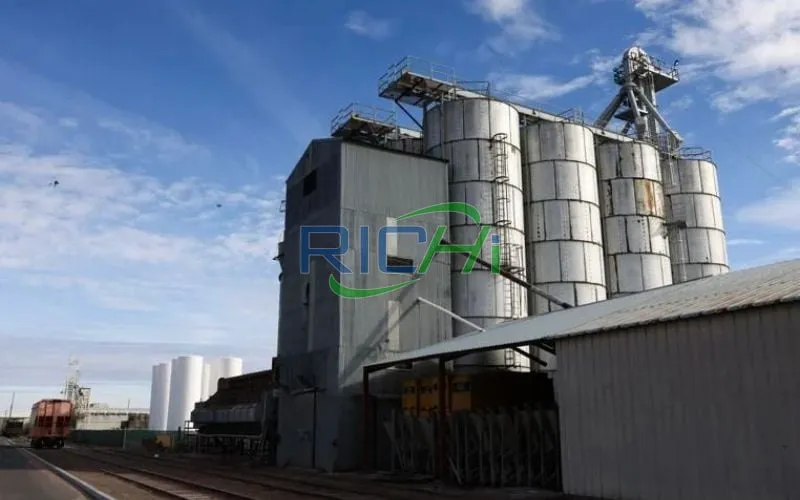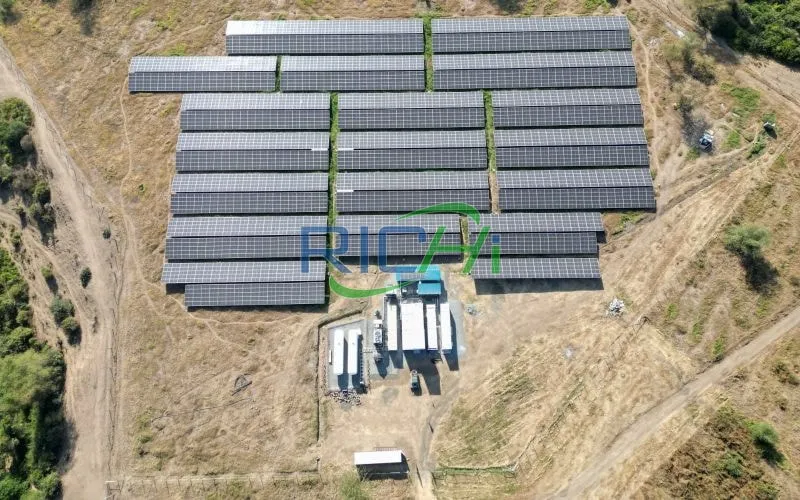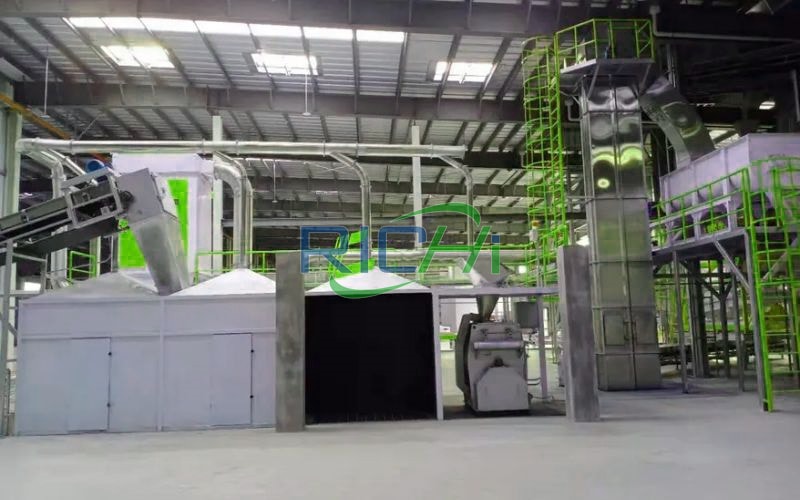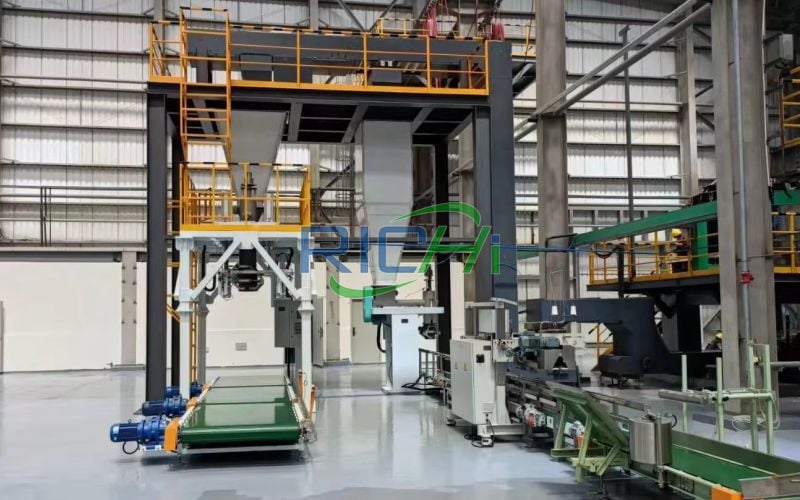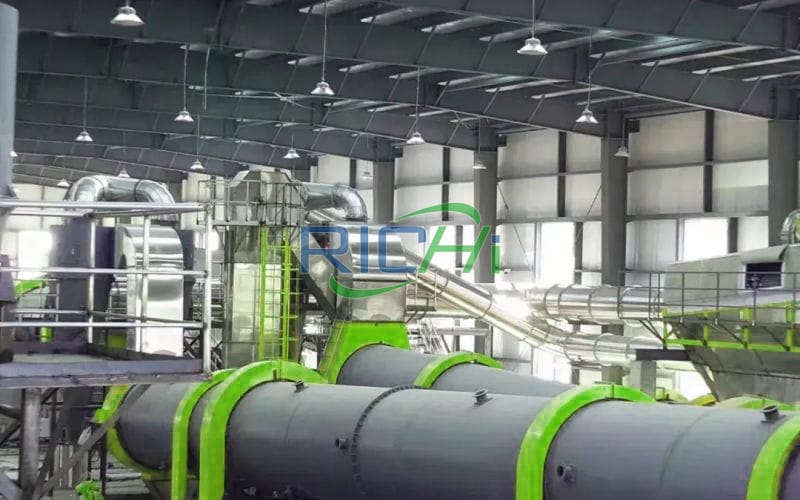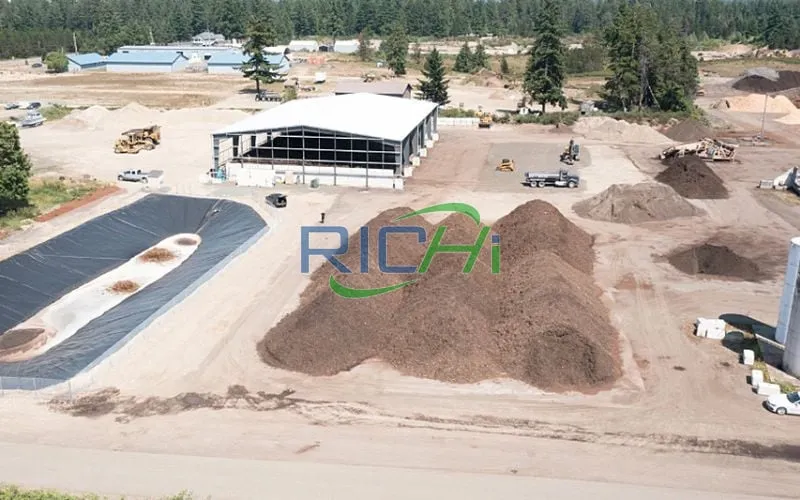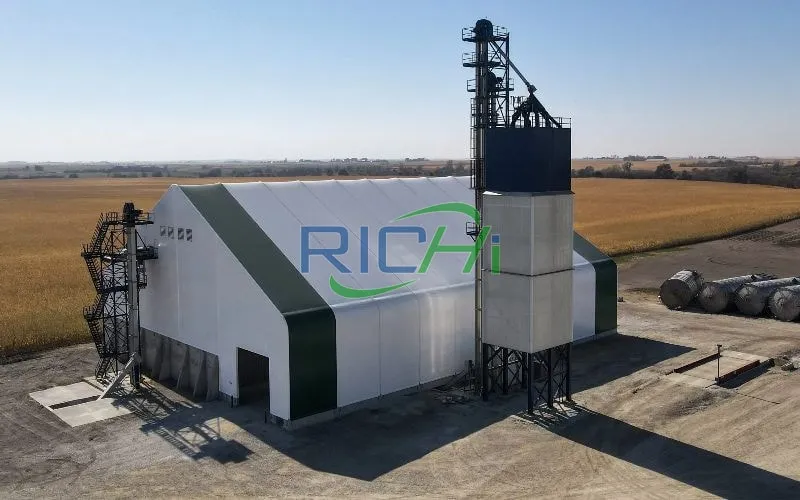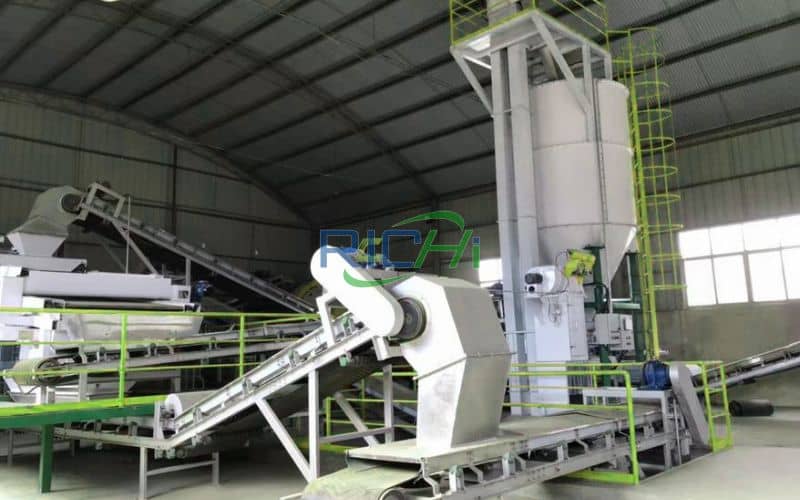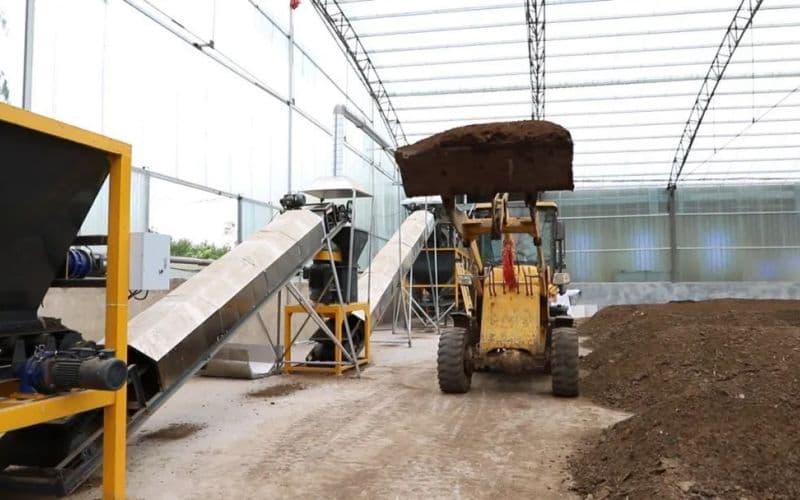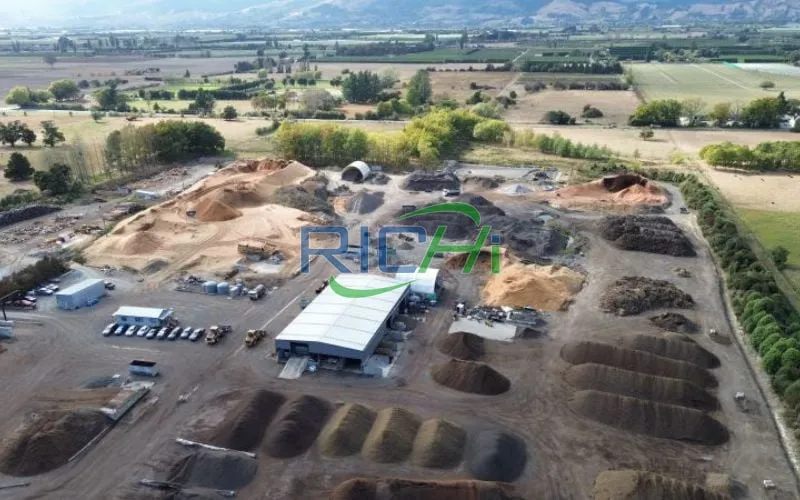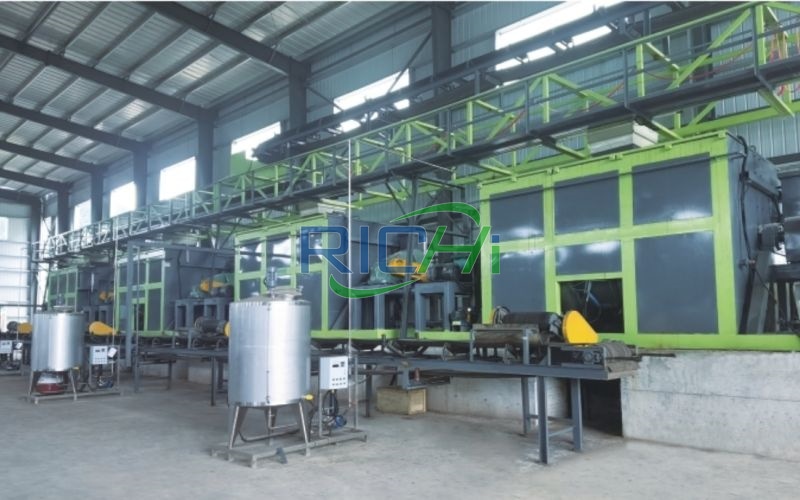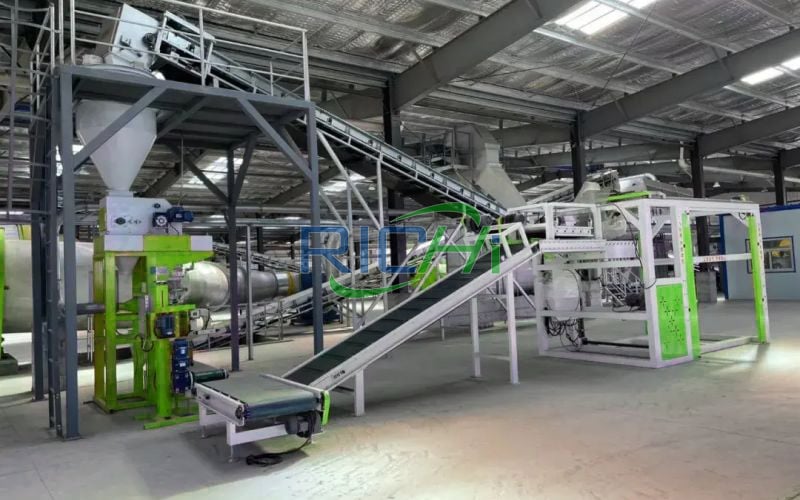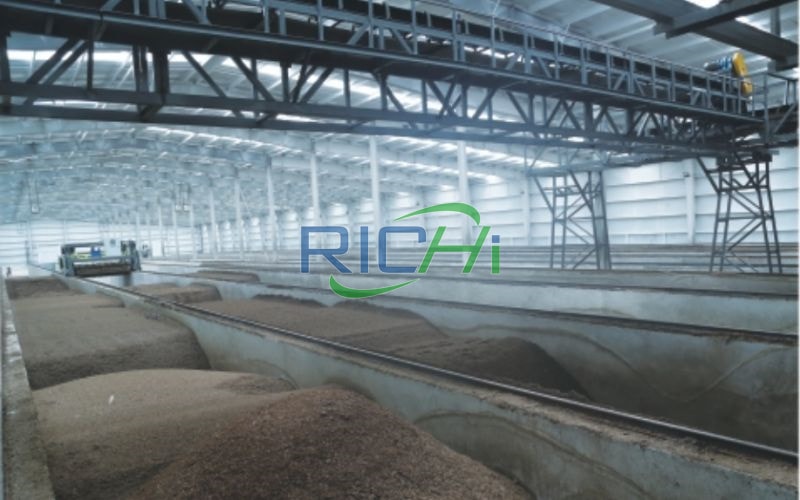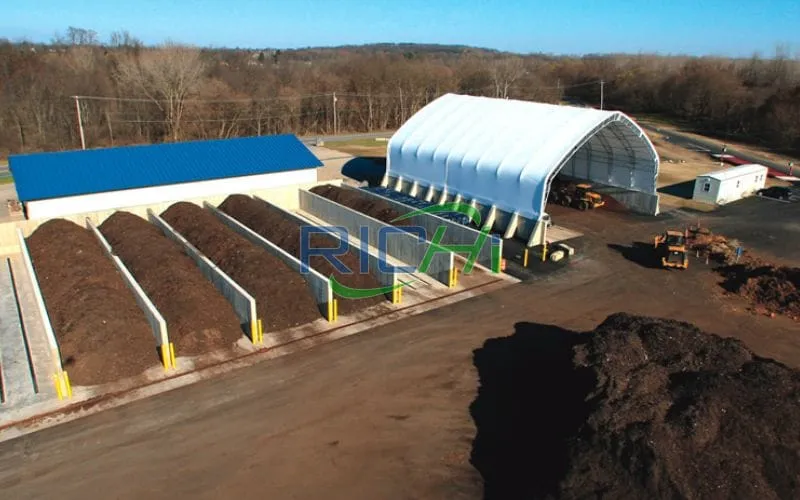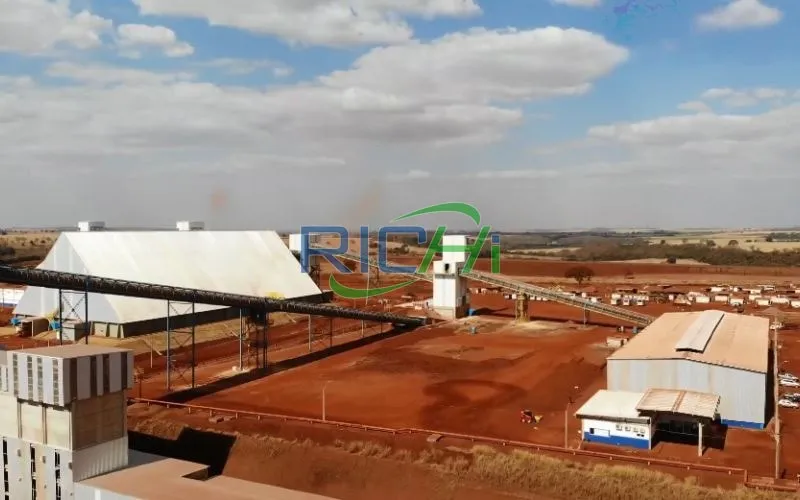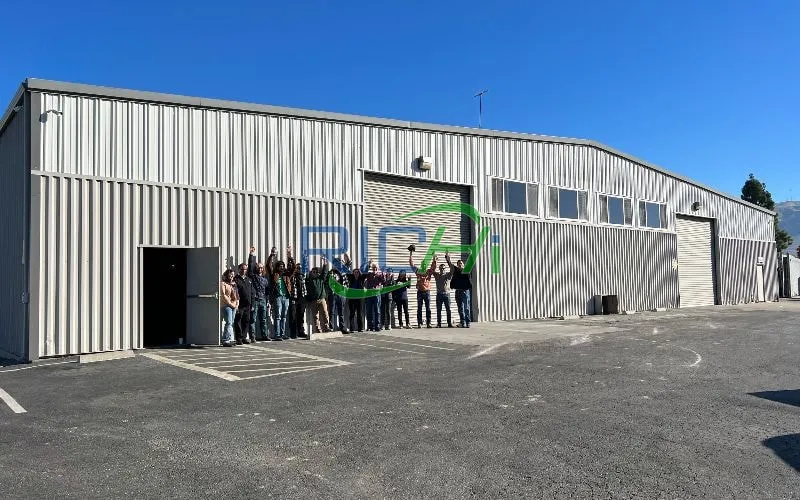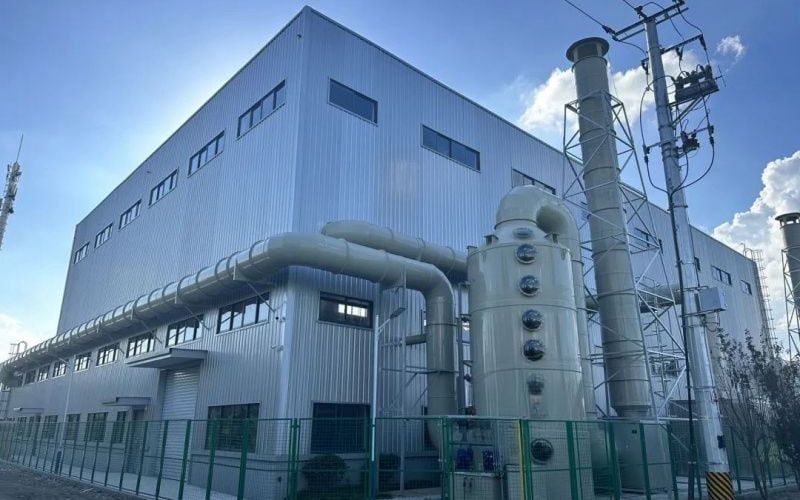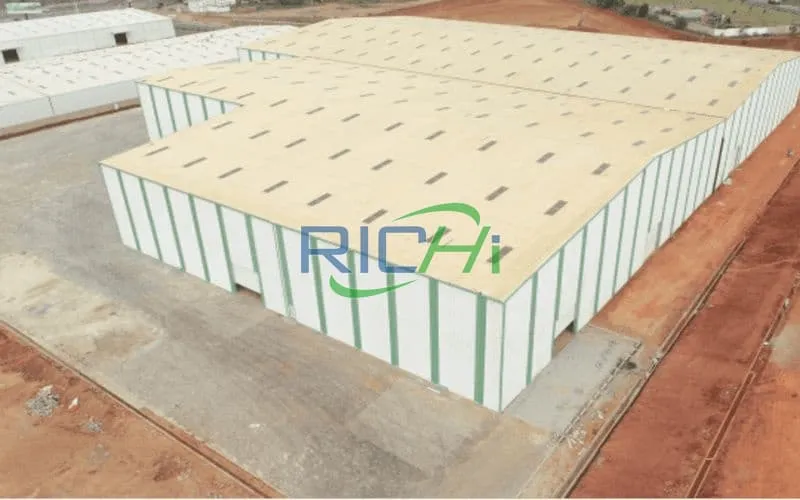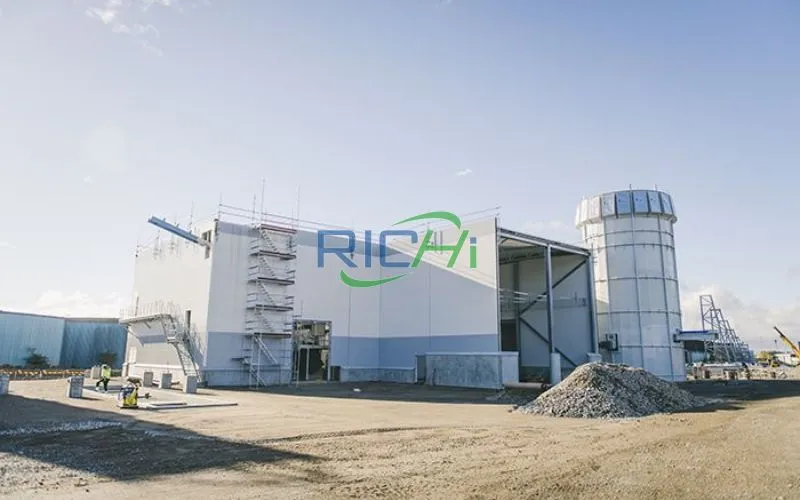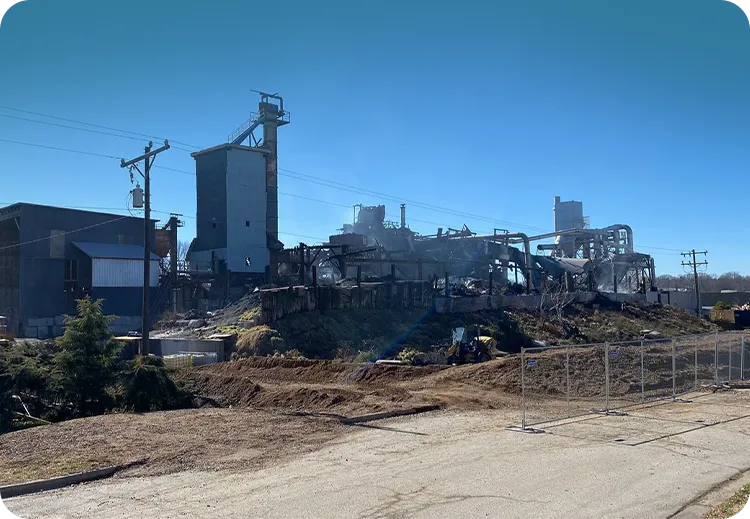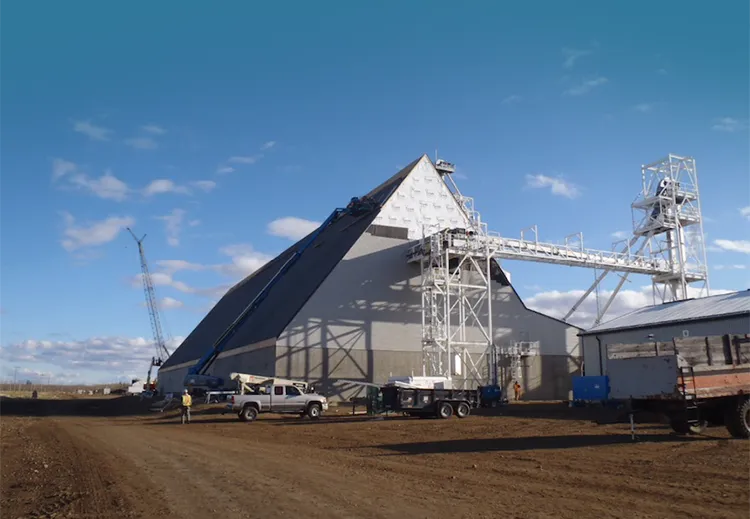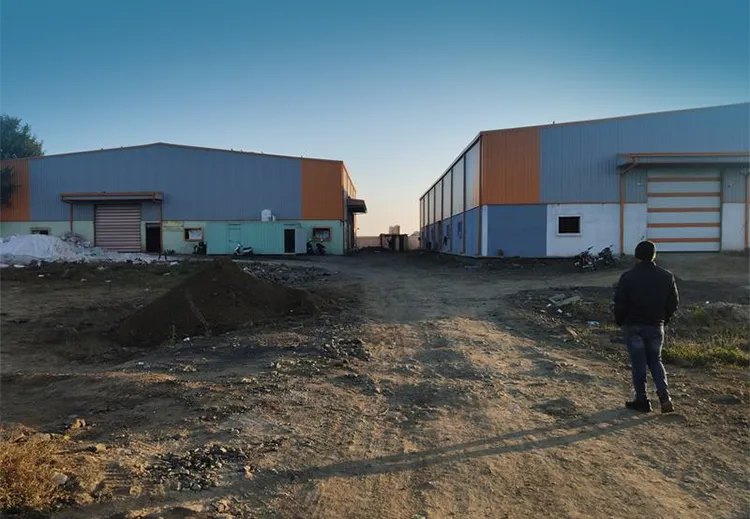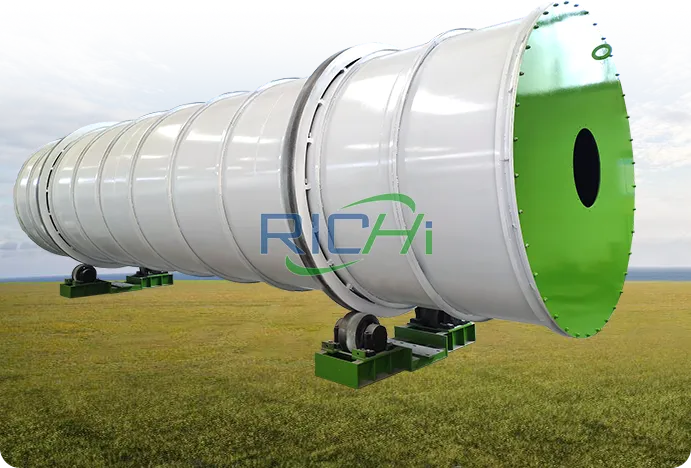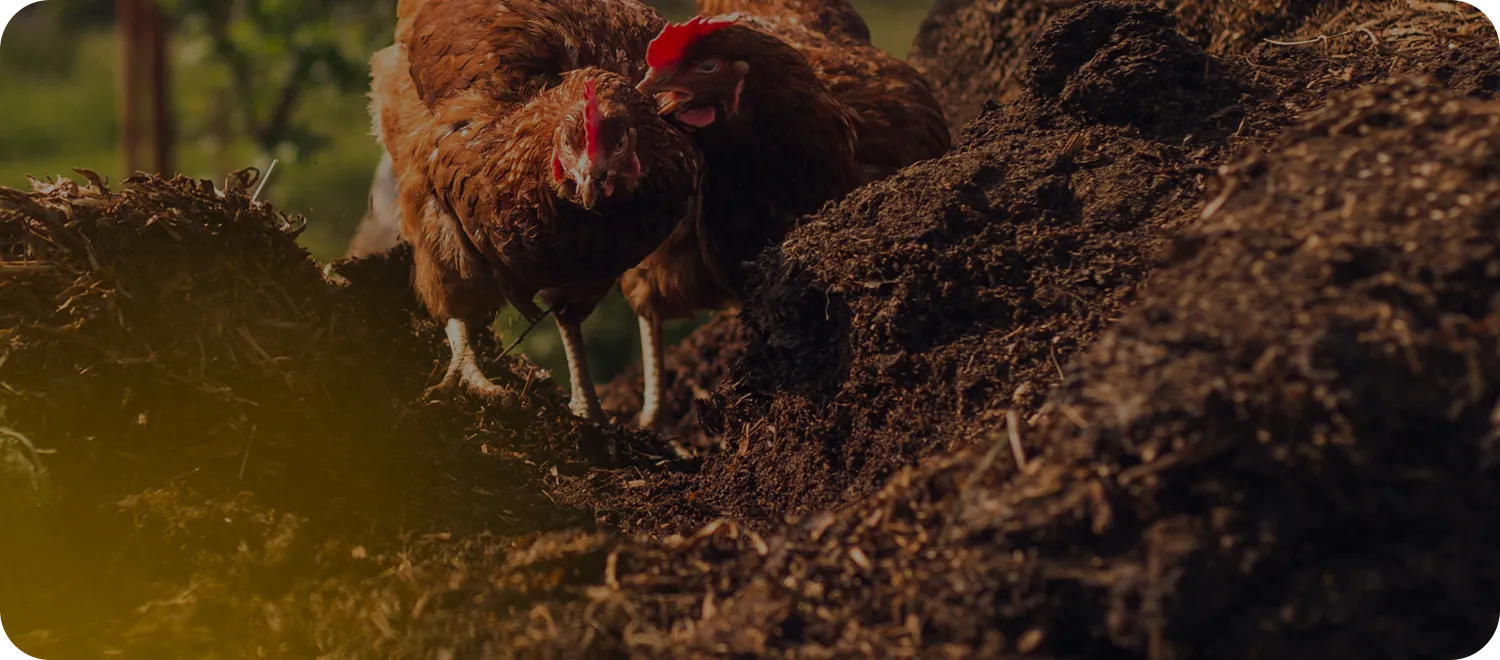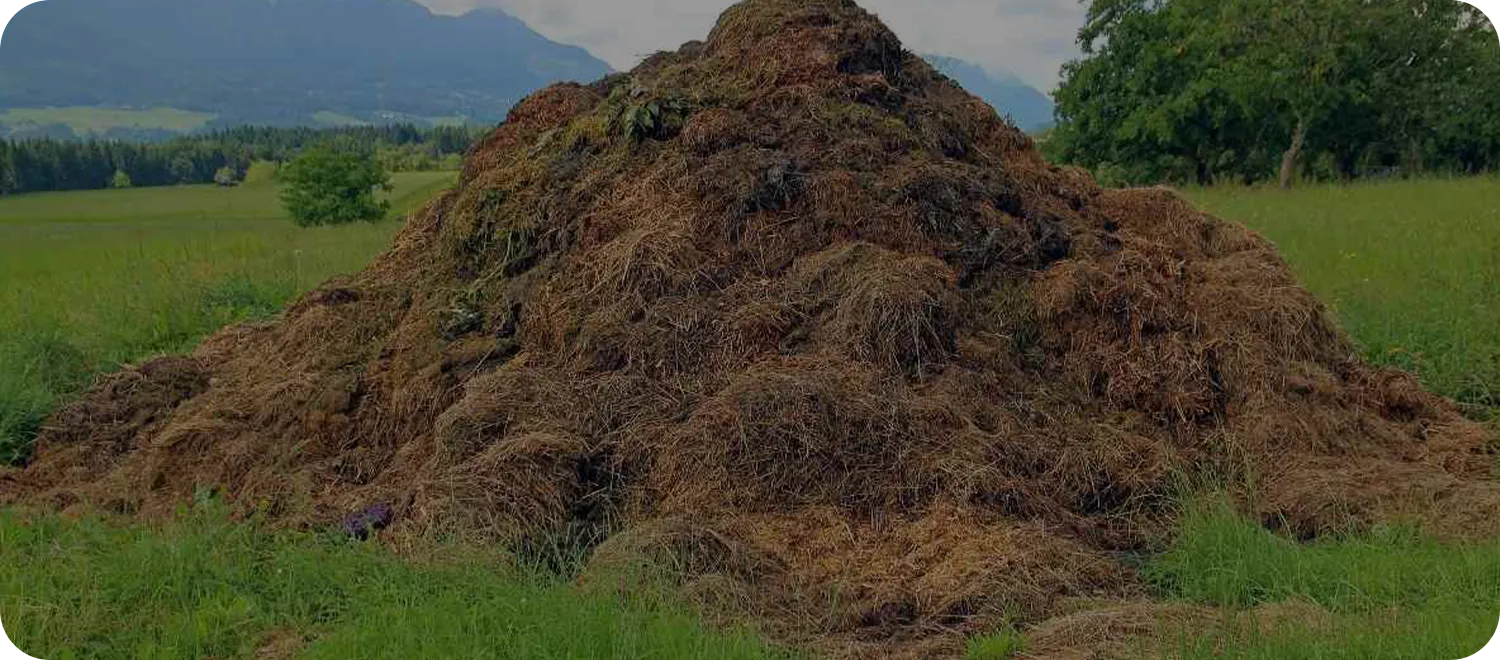ORGANIC FERTILIZER PRODUCTION PROJECT
Organic fertilizer production project is an important field involving the sustainable development of agriculture. It is a type of sustainable development project. It mainly includes animal manure organic fertilizer projects and plant organic fertilizer projects. The applicable raw materials are various animal manure, agricultural and forestry wastes, and sludge, compost, distillers grains, paper mill waste, NPK, etc.

100+
Construction Projects
With three decades of expertise in engineering and manufacturing, RICHI has successfully delivered more than 100 organic fertilizer production project installations worldwide. Our global footprint speaks to our ability to design, supply, and commission complete pellet production lines that meet diverse raw material conditions and end-product requirements.
$50 million
Total Sales
To date, our projects have generated over $50 million in total sales, reflecting the trust that clients place in our engineering capabilities and equipment quality. From initial design to full commissioning, our team works closely with you to ensure your organic fertilizer production project is efficient, scalable, and built to last.
70+
Covering countries
With a presence in more than 70 countries, RICHI provides end-to-end solutions for organic fertilizer project developers. Whether you are processing agricultural waste, livestock manure, or green biomass, we offer tailored manufacturing systems centered around high-performance granulators and complete pelletizing lines. Let’s build your next project together.
organic fertilizer production projects world wide
With projects spanning six continents, we deliver tailored fertilizer production solutions for every material and market need.
Our systems process diverse inputs—from crop residues and livestock waste to mineral blends—transforming them into high-value powdered, granular, or pelletized products. Whether producing pure organic fertilizers through aerobic fermentation, precision NPK compounds, or hybrid organic-mineral formulations, we engineer lines that maximize nutrient retention and operational efficiency.
organic fertilizer production project proposal
Backed by 500+ successful installations, we offer more than equipment—we provide complete operational frameworks including raw material testing, recipe optimization, and output validation against international standards. Our clients benefit from flexible designs that handle everything from small-batch specialty organics to large-scale BB fertilizer blending operations. Share your raw material details and production targets, and we’ll provide a customized feasibility assessment with projected ROI timelines.
Below, RICHI will show you some organic fertilizer production project proposals. These project proposals are all from some of the projects we have worked on. You can learn more about different raw materials and organic fertilizer formulas, different process plans and equipment selection from these contents.

Essential Equipment for organic fertilizer production project worldwide
A well-planned organic fertilizer production project integrates several key pieces of equipment to efficiently convert raw organic waste into high-quality fertilizer. Core components include fermentation turners for decomposition, crushers for material sizing, efficient fertilizer pellet mills for shaping granules, dryers and coolers for moisture control, screening systems for classification, and automated packaging units.
Our solutions are engineered for durability, ease of operation, and adaptability to various raw materials and production scales. As an experienced pellet mill manufacturer and full-line engineering partner, we provide end-to-end support—from design to commissioning. Contact us to discuss your specific project needs and receive a customized equipment proposal.
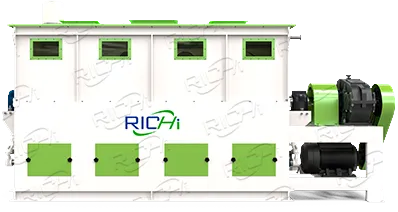
fertilizer mixer machine

fertilizer granulator machine

Crushing equipment
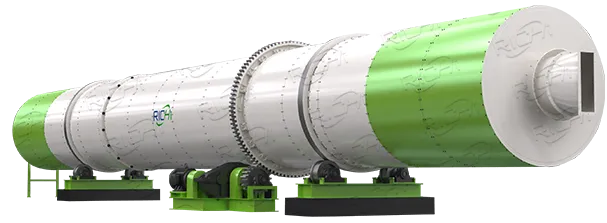
fertilizer drying machine
organic fertilizer production Project Video
Here are three videos showcasing our organic fertilizer equipment and production lines in action. You’ll get a clear look at how our systems handle materials, form high-quality granules, and deliver finished products efficiently. This is how we help customers like you turn waste into value—with reliable machinery and complete solutions tailored to your needs.
If you’re looking for professional organic fertilizer granulation technology or a full-scale engineering collaboration, we’re ready to support your organic fertilizer production project from design to operation. Let us know what you have in mind—we’ll show you the right way to make it happen.
cost to start organic fertilizer production project
Planning your organic fertilizer production project requires a clear understanding of the relationship between scale, investment, and potential returns. The table below offers a practical reference based on our global experience, outlining estimated costs, power requirements, and typical payback periods for various production capacities.
As a trusted provider of complete fertilizer equipment and production line solutions, RICHI specializes in engineering customized systems that maximize efficiency and profitability. Whether you’re processing agricultural waste, animal manure, or green waste, we tailor each organic fertilizer production project to your specific raw materials and output goals. For a detailed feasibility analysis and equipment proposal designed for your needs, contact our experts—we’re ready to support your project from concept to operation.
| Production scale | Investment Cost(USD) | Total Power | Profit cycle |
|---|---|---|---|
| 1-2T/H | 20,000-220,000 | 27-75KW | 0.5-3 Year |
| 3-4T/H | 40,000-350,000 | 47-75KW | |
| 5-6T/H | 60,000-480,000 | 53-165KW | |
| 8-10T/H | 10,000-600,000 | 68-259KW | |
| 10-12T/H | 150,000-800,000 | 125-410KW | |
| 12-15T/H | 200,000-1,100,000 | 358-620KW | |
| 15-20T/H | 35,0000-1,500,000 | 545-870KW | |
| Higher capacity to 60t/h | … | … |
About the profit
Your profitability starts with transforming low-cost organic waste – agricultural residues, livestock manure, or food processing byproducts – into premium fertilizers. Our fermentation and processing systems efficiently handle diverse feedstock while minimizing input costs, with some clients achieving 50%+ margin improvements through proper waste sourcing and formulation.
Modern organic fertilizer production requires precise control over composting, granulation, and drying processes. Our energy-efficient systems reduce processing costs by up to 40% through intelligent temperature management and optimized cycle times. With flexible configurations that can produce powdered, granular, or pelletized fertilizers, you can quickly adapt to market demands and premium pricing opportunities.
Certified organic fertilizers command 30-50% price premiums in both domestic and international markets. Our systems help you meet strict organic certification standards while maintaining consistent nutrient content and product quality. We’ll help you develop specialized formulations that stand out in the market – whether for specialty crops, organic farms, or sustainable landscaping applications.
Interested in our projects?
Turning organic waste into profitable fertilizer? Let’s build your organic fertilizer production project together!

The Prospect of organic fertilizer Processing
The global organic fertilizer production sector is witnessing significant growth, driven by increasing agricultural sustainability initiatives and stringent environmental regulations worldwide. With the rising demand for organic food and circular economy practices, converting agricultural waste, animal manure, and green waste into valuable fertilizers presents substantial opportunities across both developed and emerging markets.
Regions with strong agricultural bases – from North American livestock operations to Southeast Asian palm oil plantations – are particularly well-positioned to capitalize on this trend through proper waste-to-value conversion systems.
Our company brings decades of specialized experience in designing complete organic fertilizer production lines that are optimized for various raw materials and local conditions. We provide comprehensive solutions including fermentation systems, crushing equipment, granulation technology, and packaging systems – all backed by thorough feasibility studies and operational support. Contact us today to discuss your specific raw materials and production goals, and let us help you transform organic waste into profitable, sustainable fertilizer products.
DISCOVER OUR PRODUCTS
From fermentation challenges to granulation consistency, our field team has compiled the most critical FAQs based on 200+ global organic fertilizer projects. These insights address actual production issues—like managing high-moisture manure or achieving organic certification—with data-driven solutions that work in real-world conditions.
What equipment is needed to carry out an organic fertilizer production project?
+
The success of your organic fertilizer production project hinges on selecting the right equipment configuration to match your raw materials and target product. Whether you aim to produce powdered or granular organic fertilizer, compound fertilizer, or bulk blends, the machinery must be robust, efficient, and adaptable. Here’s a breakdown of the core equipment needed for a functional production line:
Generally speaking, organic fertilizer projects mainly require fermentation equipment, turners, pulverizers, mixers, granulators, coolers, dryers, screening machines, quantitative balers, sewing machines, conveyors, dust removal equipment, etc.
1. Fermentation System
The foundation of organic fertilizer production. A dedicated composting system, such as a windrow turner or fermenter, is essential for breaking down raw materials like animal manure and crop residues. This aerobic process stabilizes organic matter, eliminates pathogens, and initiates nutrient conversion.
2. Crushing and Grinding Equipment
Post-fermentation, materials often form clumps. A high-quality crusher or hammer mill ensures uniformity by breaking down composted matter into a fine, consistent powder. This step is critical for achieving homogeneity in both powdered and granular final products.
3. Mixing System
A double-shaft mixer or horizontal mixer is indispensable for blending ingredients uniformly. This is especially important for producing compound fertilizers, organic-compound blends, or BB fertilizers, where precise ratios of NPK, micronutrients, and organic base must be thoroughly combined.
4. Granulation Equipment
For pelletized products, a granulator is the heart of the line. Our organic fertilizer granulator is ideal for pure organic materials, compound organic matter, producing granules with high organic content.
5. Drying and Cooling System
Newly formed pellets contain moisture and are soft. A rotary dryer reduces moisture content to a stable level, while a cooler hardens the granules to prevent caking and ensure storage stability. This step is vital for product shelf life.
6. Screening and Packaging
A vibrating screen separates oversized or undersized granules from the finished product, ensuring uniformity. The qualified product is then weighed and packaged automatically for market distribution.
Supporting equipment, such as belt conveyors, bucket elevators, and a pulse dust collector, integrates these stages into a seamless, automated system. The exact configuration for your organic fertilizer production project will depend on your specific raw materials, target capacity, and product type (powdered, granular, organic, or compound).
At Richi Machinery, we specialize in designing customized solutions that transform diverse raw materials—from manure and straw to NPK formulations—into high-value fertilizer products. Our engineers focus on optimizing each stage for efficiency, output, and ROI, ensuring your project is built for long-term success.


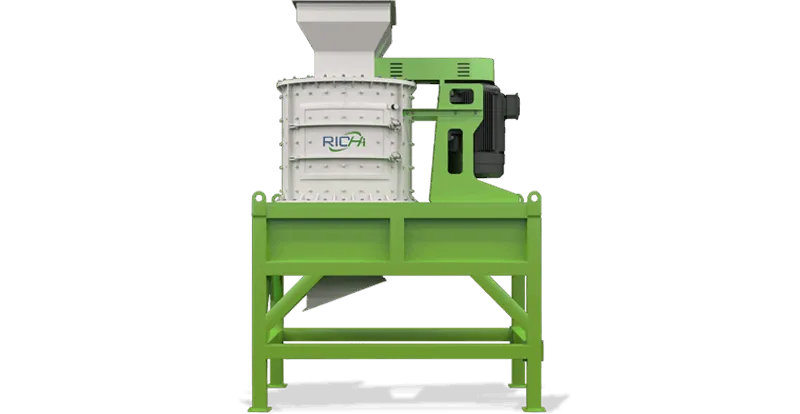

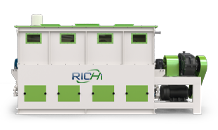
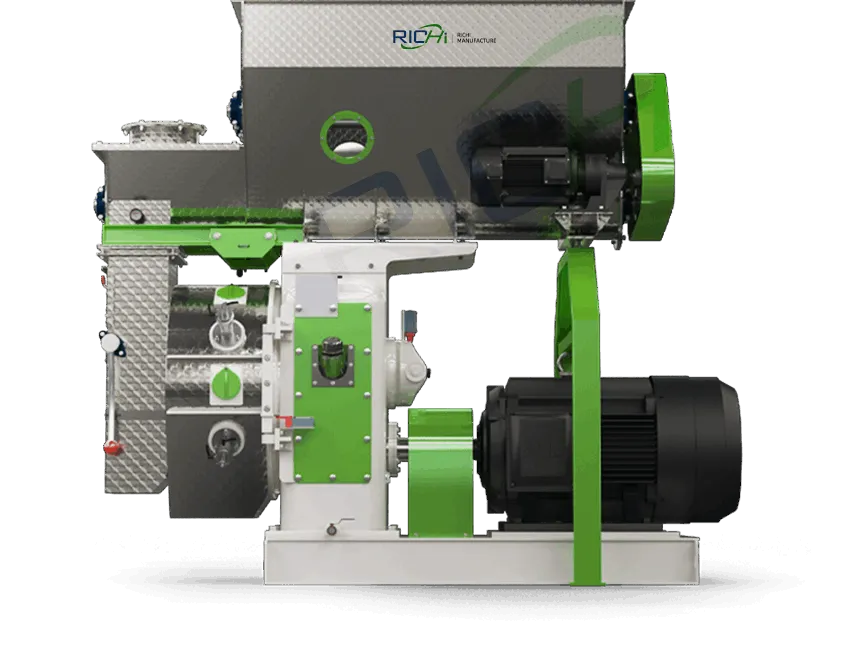
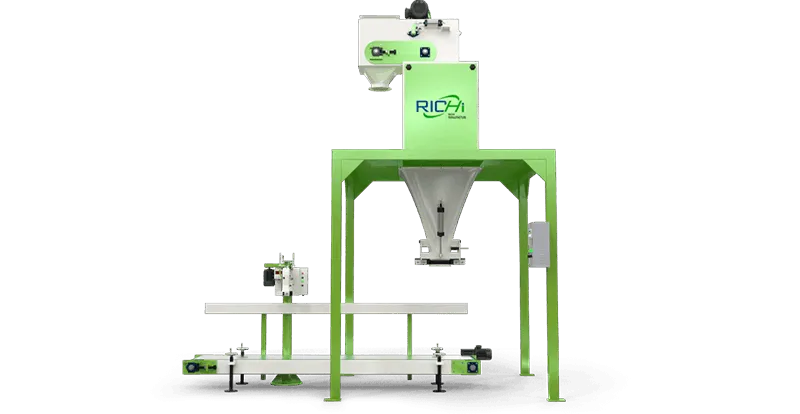

Our organic fertilizer production project engineering, controls, and software teams are experienced fertilizer pellet line manufacturers, always generating fresh ideas to improve overall equipment efficiency and drive better productivity.
How to build an organic fertilizer production project? above is an introduction to the general principles and ?
+
With the development of the organic fertilizer industry, more and more people are interested in organic fertilizer projects. So, how to build an organic fertilizer project or organic manure project? Below, RICHI Machinery will introduce the construction process of the organic fertilizer project:
Continuous Improvement:
During the operation process, establish a continuous improvement mechanism. Through market feedback and internal audits, the production process and product quality are optimized to continuously improve the factory’s competitiveness.
Market Research:
Before building a new organic fertilizer production project, you must first conduct market research to understand the demand, consumer preferences, competitors and other information of the organic fertilizer market in the region. Market research can provide a basis for subsequent project planning, product development and sales preparation.
Site Selection:
Based on the market research results, select a suitable site for a new organic fertilizer production project in a suitable area. Site selection needs to consider the convenience of transportation, infrastructure such as electricity and water, as well as the distance from suppliers and sales channels.
Project Planning:
Relevant departments will carry out project planning and determine the overall scale, layout, production line equipment, technical solutions, etc. of the new organic fertilizer production project. Project planning needs to fully consider market demand, investment budget and potential risks.
Fund Raising:
After completing the project planning, proceed with fund raising. Including self-raising funds, applying for loans, introducing investment and other methods to ensure that the project can proceed smoothly.
Application For Approval:
Prepare relevant information and apply to relevant government departments for approval procedures for a new organic fertilizer production project. Application materials include project planning, investment estimates, etc.
Equipment Procurement:
On the basis of application approval, the required organic fertilizer production equipment will be determined and purchased according to the factory plan. When purchasing, you need to pay attention to the quality, performance and price of the equipment, and negotiate and sign contracts with suppliers.
Construction Projects:
According to the project plan, the construction of organic fertilizer production project is carried out. Including site leveling, factory construction, equipment installation and commissioning, etc. Construction projects need to comply with relevant laws, regulations and construction standards.
Personnel Recruitment:
Recruit employees based on factory size and production needs. Positions that need to be recruited include production workers, equipment operators, quality inspection personnel, management personnel, etc. Employee quality, expertise and experience need to be considered when recruiting.
Trial Production:
After the organic fertilizer production project is completed, trial production of the organic fertilizer production project will be carried out. Trial production can verify equipment performance and process flow, and make production adjustments and optimizations.
Product Research and Development:
On the basis of trial production, product research and development is carried out. Carry out research and development of new products and improvement of production processes based on market demand and competitor conditions.
Marketing:
On the basis of product research and development, market promotion is carried out. Including determining sales channels, formulating sales strategies, conducting product publicity and promotion activities, etc.
Formal Production:
According to market demand and order situation, the formal production stage will be entered. And produce in accordance with the specified organic fertilizer production process and quality standards.
Quality Control:
In formal production, a quality control system is established to conduct quality testing and monitoring of products. Detect and resolve quality issues in a timely manner to ensure products meet specified quality standards.
After-sales Service:
During the product sales process, provide after-sales service. Including discovering and solving consumer problems and complaints, and safeguarding consumers’ interests and brand image.
The above is the main process of building a new organic fertilizer production project. However, it should be noted that the construction process of each specific project may be different and needs to be adjusted and supplemented according to the actual situation.
What is the construction cost of an organic fertilizer production project?
+
How much does an organic fertilizer production project cost? Generally speaking, the cost of building a 1-60t/h organic fertilizer project is between 20,000-3,000,000 USD. During the investment process of an organic fertilizer plant, detailed financial preparations and plan preparations are required.
The total investment required can vary significantly based on production scale, desired product mix (powdered, granular, pellet), and the level of automation. A small to medium-scale plant with basic automation may require a considerably lower investment, while a large, fully automated facility designed for high output and multiple product types will involve a higher capital commitment.
| Production Scale | Investment Cost(USD) | Total Power | Profit cycle |
| 1-2T/H | 20,000-220,000 | 27-75KW | 0.5-3 Year |
| 3-4T/H | 40,000-350,000 | 47-75KW | |
| 5-6T/H | 60,000-480,000 | 53-165KW | |
| 8-10T/H | 10,000-600,000 | 68-259KW | |
| 10-12T/H | 150,000-800,000 | 125-410KW | |
| 12-15T/H | 200,000-1,100,000 | 358-620KW | |
| 15-20T/H | 35,0000-1,500,000 | 545-870KW | |
| Higher capacity to 60t/h | … | … | |
| About the profit : 1. Depends on the customer’s local fertilizer price and raw material price, which is determined by the difference of resources in different regions; 2. Depending on the operating cost of the equipment, it is composed of worker wages, electricity costs, and wearing parts costs, among which worker wages and electricity fees are relatively fixed, and the cost of wearing parts is related to the configuration and operation of the entire fertilizer making equipment; 3. It depends on the customer’s management of the complete fertilizer production plants. Responsible managers & skilled production line equipment operators are the foundation for the smooth operation and high returns of any organic fertilizer plants. | |||
Land cost:
Organic fertilizer production project needs to find a suitable place to build the factory during the process of building the factory. Most of them will choose rural areas, which are basically industrial land. The cost of factory land must be controlled well, and the budget must be formulated according to the location and area of the factory.
Factory construction costs:
Depending on the situation in each country, the construction cost of a general factory building ranges from tens to hundreds of dollars per square meter. If the factory building area is relatively large and the organic fertilizer production project scale is large, the investment required will be relatively high.
This is ideal if you already have an existing factory. If you are using a venue that you do not own, you will need to pay a venue hire fee. This cost varies by region and needs to be considered in the investment budget.
Equipment cost:
During the preparation process of an organic fertilizer plant, it is also necessary to prepare a complete set of equipment required for the production of fertilizers, including various machines, mixers, belt conveyors, packaging machines, etc.
Purchasing organic fertilizer equipment is the first expense of investment. The brand, model, specifications and performance of the equipment will directly affect the price. Generally speaking, high-performance, large-capacity organic fertilizer equipment is more expensive. Appropriate equipment needs to be selected based on production scale and needs.
Shipping and installation fees:
Organic fertilizer equipment needs to be transported to the location of use and installed and debugged, which involves transportation costs, loading and unloading equipment costs, and labor costs for installation and debugging. This part of the expenditure also needs to be taken into account.
Electricity and energy costs:
Equipment in organic fertilizer production projects usually requires electricity to drive, so the cost of electricity needs to be considered during use. At the same time, if used in remote areas, the purchase and operating costs of energy equipment such as generators need to be considered.
Maintenance and maintenance costs:
Organic fertilizer equipment requires regular maintenance and upkeep to ensure the normal operation of the equipment and extend its service life. This includes parts replacement, lubricant costs, maintenance personnel wages, etc.
Labor costs:
Operating organic fertilizer production lines and equipment requires operators, and their wages will be part of the cost. Additionally, if dedicated maintenance personnel are required, their salaries should also be taken into consideration.
Environmental protection and monitoring costs:
In order to comply with ecological and environmental protection regulations, it may be necessary to invest in some environmental protection equipment or conduct emission monitoring, and related costs must also be included in the fee.
Raw material costs:
During the preparation process of the organic fertilizer production project, it is necessary to determine the source of raw materials according to the type of organic fertilizer produced, and do a good job in procurement to ensure a sustainable supply of raw materials.
Working capital costs:
During the preparation process of organic fertilizer, it is also necessary to prepare working capital for the daily operation of the factory and corresponding expenses, including the payment of water, electricity and miscellaneous fees. At the same time, relevant procedures also need to be completed. Liquidity needs to be sufficient to maintain daily operations.
In general, the cost of an organic fertilizer production project is a complex and multi-faceted issue that requires comprehensive consideration of the project’s civil construction, raw materials, process equipment, water, electricity and energy costs.
When formulating an investment plan, you should fully understand the market conditions and choose organic fertilizer equipment that suits your business needs and budget. (Find RICHI on YouTube)
What is the main process flow for producing organic fertilizer?
+
The core processes include fermentation, crushing, mixing, granulation (using ring die granulators), drying, cooling, and packaging. Each step is critical for producing high-quality fertilizers—whether powdered or granular—with consistent nutrient distribution and physical stability.
What types of fertilizers can your organic fertilizer production line handle?
+
Our systems are engineered to produce:
- Organic fertilizer (from straw, animal manure, and other organic waste via fermentation)
- Compound fertilizer (NPK with trace elements)
- Organic compound fertilizer (blending organic matter with NPK ingredients)
- Bulk blending fertilizer (mixing single fertilizers like urea, potassium, and phosphate)
This flexibility allows us to design solutions tailored to your raw materials and target products.
Why choose a ring die granulator for organic fertilizer production?
+
Ring die granulators are ideal for organic-based materials due to their high compression force, durability, and ability to handle moist, fibrous feedstocks. They produce dense, uniform pellets with low breakage rates, ensuring better storage and handling properties. Unlike flat die systems, ring die granulators offer higher output and are more suited for large-scale, continuous production.
How do you ensure the production line meets specific raw material requirements?
+
Our engineering team evaluates your raw material characteristics (moisture content, texture, composition) to customize the process design. Whether you’re working with high-lignin straw, wet manure, or blended NPK materials, we adjust parameters like fermentation time, crushing fineness, and granulation pressure to optimize output quality.
What makes your project design and equipment stand out?
+
With decades of experience, we focus on delivering robust, efficient systems backed by practical expertise. Our equipment is built for durability and ease of maintenance, and we provide end-to-end support—from process layout to automation integration—to ensure your project runs smoothly and profitably.
Do you offer customized solutions for small or large-scale production?
+
Yes. We design scalable systems tailored to your output goals, whether you’re starting with a pilot line or expanding a high-capacity facility. Our solutions focus on energy efficiency, process optimization, and future upgradability.
How is the fermentation process controlled for optimal results?
+
We integrate forced-aeration fermentation systems with automated temperature and moisture monitoring to ensure efficient decomposition and pathogen elimination. This process is critical for stabilizing organic matter and enhancing nutrient availability in the final product.
What after-sales support do you provide?
+
Our team offers installation guidance, operator training, and ongoing technical support. We also provide spare parts and remote troubleshooting to minimize downtime and keep your production line running at peak performance.
What is the typical investment range for a 10,000 tons/year compared to a 50,000 tons/year production line?
+
The investment for a 10,000 tons/year organic fertilizer production line is generally more compact, suitable for medium-scale operations, with a focus on flexibility and core process coverage.
In contrast, a 50,000 tons/year system involves higher equipment capacity, more automation, and auxiliary systems—such as advanced drying, cooling, and automated packaging—which increase the initial investment but significantly reduce labor and operational costs over time.
How does automation level change with increased production capacity?
For a 10,000 tons/year line, basic automation—such as belt conveyors and semi-automatic controls—is common to keep costs manageable while ensuring reliable output.
At 50,000 tons/year, full automation is recommended, including PLC-controlled batching, continuous fermentation monitoring, automated granulation adjustment, and integrated packaging systems. This minimizes human error, improves consistency, and enhances safety for large-volume production.
What is the market demand and prospects for organic fertilizer?
+
The demand for organic fertilizer is growing significantly across agriculture, horticulture, and lawn care, driven by the global shift toward sustainable practices.
- In agriculture, farmers increasingly rely on organic and organic compound fertilizers to improve soil health and meet organic certification standards.
- Horticulture and greenhouse operations value consistent, nutrient-rich organic pellets for potted plants and ornamentals.
- The turf and landscaping industry also prefers specialized organic-based blends for golf courses, parks, and residential lawns due to their slow-release benefits and environmental safety.
What are the main raw materials for producing organic fertilizer?
+
A wide range of organic materials can be used, including livestock manure (from poultry, cattle, or pigs), crop residues (like straw and rice husks), food processing waste, green waste, and qualified sludge. These materials are rich in organic matter and nutrients, making them ideal for producing high-quality fertilizers after proper treatment.
What are the special requirements for site selection for an organic fertilizer production project?
+
Choosing the right location requires careful evaluation of several interconnected factors. Proximity to raw material sources is paramount to minimize transportation costs for bulky materials like manure and straw.
Simultaneously, distance from residential areas is crucial to mitigate potential odor-related complaints, even when using enclosed fermentation systems. Easy access to reliable transportation networks is also essential for both receiving inputs and distributing finished products.
What is the operating cost (OPEX) per ton of organic fertilizer produced?
+
1. What are the main components that make up the operational cost per ton?
The operational expenditure is primarily influenced by raw material acquisition, energy consumption, labor requirements, and equipment depreciation. The specific cost per ton can vary significantly based on local factors, production scale, and the type of fertilizer being produced.
2. How do raw material choices impact operating costs?
The cost and availability of feedstocks like manure, straw, or other organic wastes directly affect expenses. Using locally sourced or waste-derived materials often provides a cost advantage. For compound or organic compound fertilizers, the addition of NPK materials represents another variable cost component that requires careful formulation management.
3. What role does energy consumption play in production costs?
Energy usage throughout the process—particularly during fermentation (aeration), drying, and granulation—contributes substantially to operational expenses. Efficient equipment design and proper process control help minimize these costs. For example, our ring die granulators are engineered for optimal energy efficiency in forming uniform pellets.
4. How does automation affect labor costs and operational efficiency?
While automated systems require a higher initial investment, they typically reduce long-term labor costs and improve consistency. The level of automation directly influences the number of operators needed and the precision of operations, from mixing to packaging.
5. Why is it difficult to provide a single cost estimate per ton?
Operating costs depend heavily on regional factors including utility rates, labor wages, raw material prices, and production scale. A small-scale powdered organic fertilizer operation will have a very different cost structure than a large-scale granular organic compound fertilizer plant. The most accurate assessment comes from analyzing your specific location, available materials, and production goals.
Richi Machinery focuses on designing production lines that optimize these operational variables, helping you achieve the most efficient cost structure for your specific situation.
Have you done any other special organic fertilizer production line projects?
+
Here, You’ll find many different types of organic fertilizer production projects. Our equipment has been exported to many countries. Based on high-quality equipment and professional production line equipment, we have finally received praise from customers from all continents, and also for us subsequent clients demonstrated dozens of successful project sites.
This objective fact is one of the reasons why many customers choose us. Another reason is the richness of our projects. The projects we have done cover the production of various organic fertilizers, bio-organic fertilizers, and compound fertilizers, and the raw materials and fertilizer formulas used have their own characteristics.
Below, RICHI will list some of the special projects we have done. We hope this information can provide some reference for your organic fertilizer processing business.
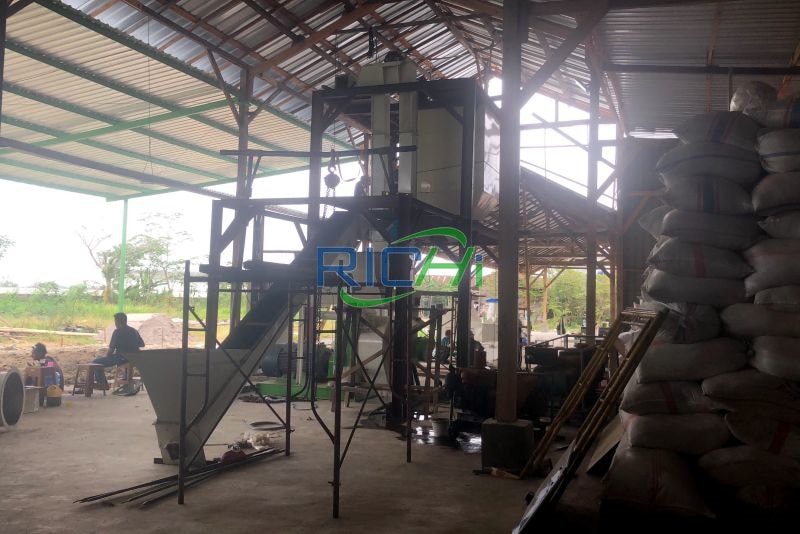
organic fertilizer production project In Vietnam
- Country: Vietnam
- Production: 15000 t/a
- Ingredients: Agricultural and forestry waste, sludge
- Organic fertilizer production project price: 80,000 USD
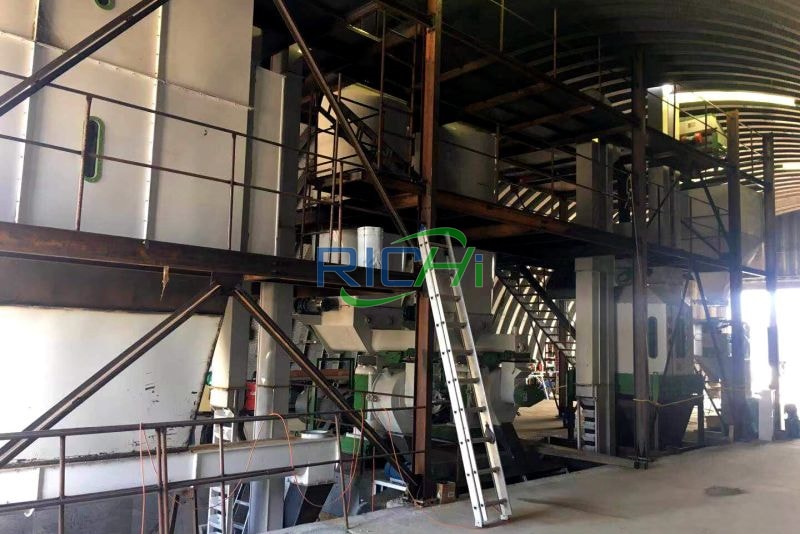
organic fertilizer production project In Brazil
- Country: Brazil
- Production: 10,000 T/A
- Ingredients: Poultry & livestock manure
- Organic fertilizer production project price: US$110,000
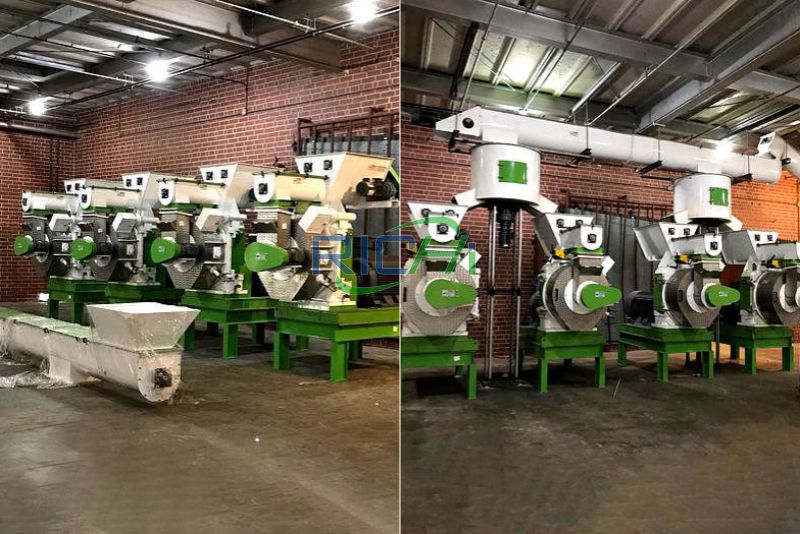
organic fertilizer production project In United States
- Country: United States
- Production: 50,000 T/A
- Ingredients: poultry litter, agri waste
- Organic fertilizer production project price: US$430,000
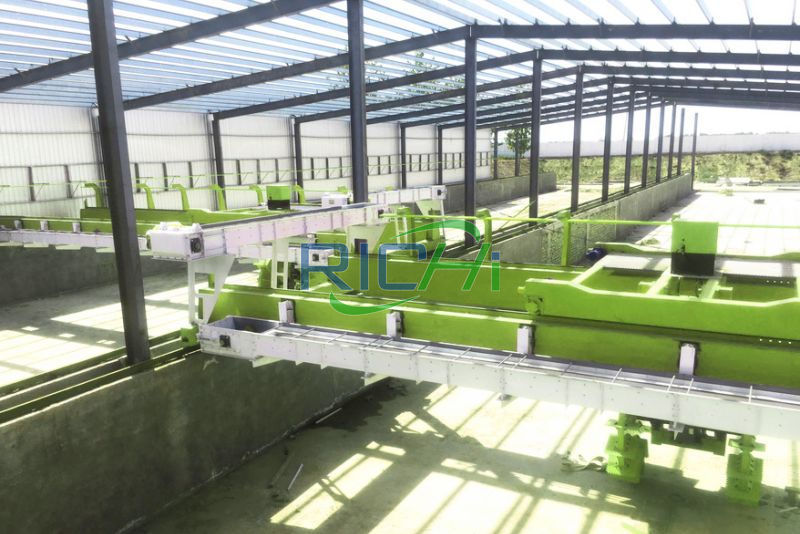
organic fertilizer production project In Croatia
- Country: Croatia
- Production: 35,000 T/A
- Ingredients: food waste, animal manure
- Organic fertilizer production project price: 410,000USD
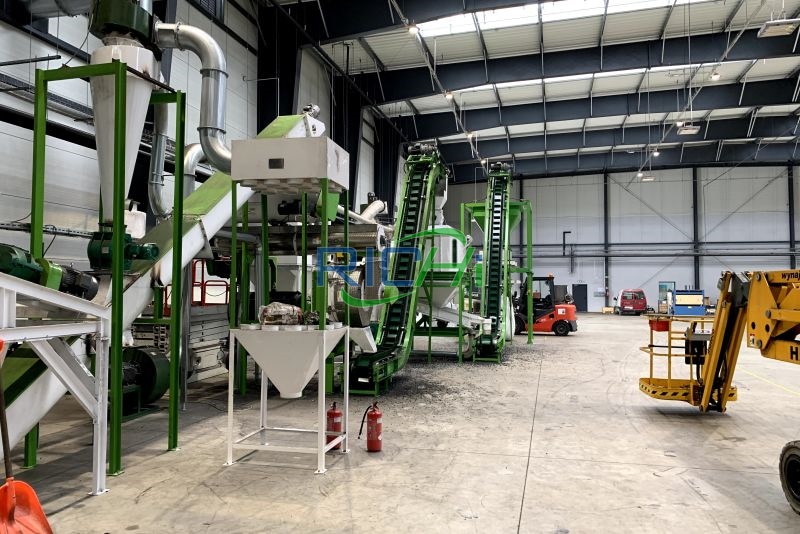
organic fertilizer project In Turkey
- Country: Turkey
- Production: 25,000 T/A
- Ingredients: chicken manure
- Organic fertilizer production project cost: 570,000 USD
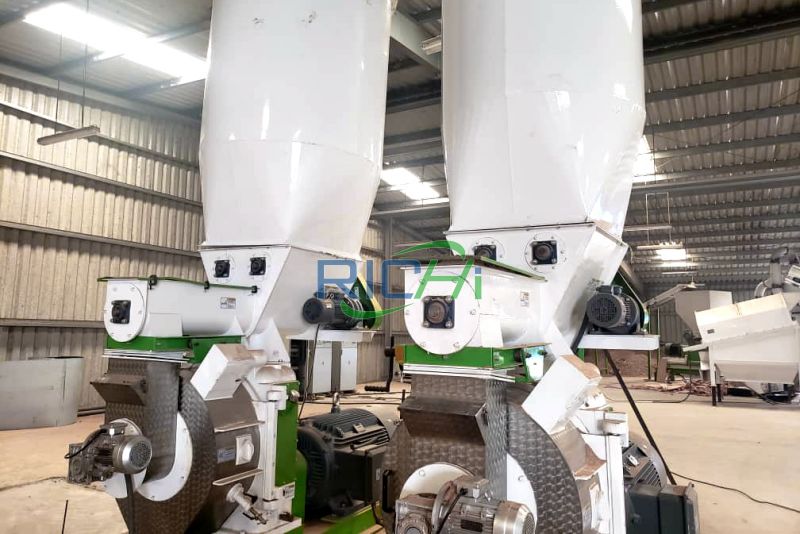
organic fertilizer project In Iran
- Country: Iran
- Production: 30,000 T/A
- Ingredients: animal manure, straw
- Organic fertilizer production project cost: 190,000 USD
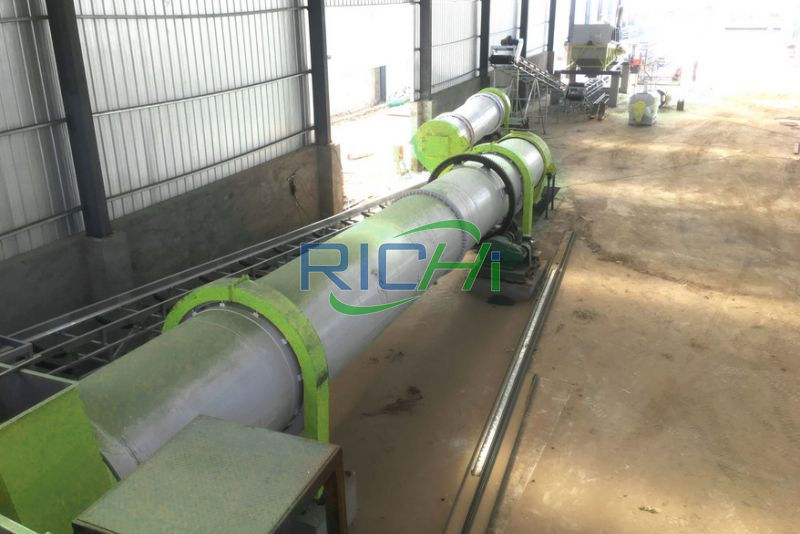
organic manure project In Australia
- Country: Australia
- Production: 6,000 T/A
- Ingredients: livestock manure, sludge
- Organic fertilizer production project cost: $160,000
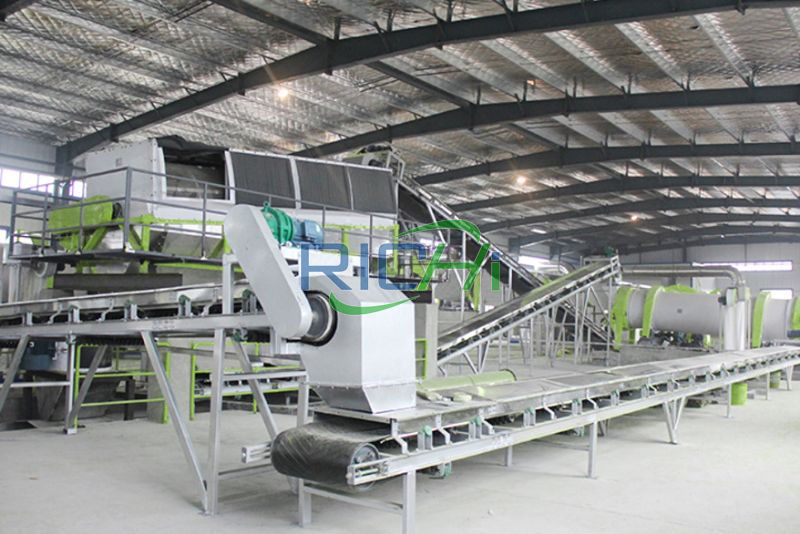
bio fertilizer project In Pakistan
- Organic fertilizer production project cost: $385,000 USD
- Country: Pakistan
- Production: 30,000 T/A
- Ingredients: cow manure, argri waste
Have you ever done any organic fertilizer processing project with a capacity of 30 t/h or above?
+
Yes, we have. Here are three organic fertilizer production projects we have done.
[Case 1] 30 T/H organic fertilizer production project
We engineered a 30 T/H compound organic fertilizer facility in Poland, utilizing distiller’s yeast residue and mineral additives to produce uniform 4-8mm granules.
The $0.78M project integrates specialized granulation, dust control, and automated batching within a 3,600m² site, delivering 58,000 t/a output with optimized consumption of utilities and labor for high-efficiency single-shift production.
- Annual output: 58,000 tons
- Total investment: 780,000 USD
- Project area: 3600m²
- Main construction contents: production workshop, finished product warehouse, raw material warehouse, office building, canteen, power distribution room
- Number of employees & work system: The number of employees is 18, production is 8 hours a day, and the operation is 240 days a year.
- Raw material consumption (t/a): distiller’s yeast residue*20000, plant ash*20000, urea*1600, ammonium chloride*2000, ammonium sulfate*800, superphosphate fertilizer*400, monoammonium phosphate*1200, potassium chloride*1600, Bentonite*400, superphosphate*10000
- Product specifications: Φ4-8mm
- Energy consumption: water*2376.2m3/a, electricity*350,000kw·h
- Main equipment: organic fertilizer granulator, pulverizer, mixer, conveyor, screening machine, metering machine, induced draft dust collector, packaging scale, forklift, etc.
30 T/H organic fertilizer production project process flow:
This organic fertilizer production line adopts a non-fermentation process. The purchased plant ash, distiller’s yeast residue and superphosphate are mixed and granulated in a ratio of 2:2:1, then enter the crusher for crushing, and then enter the screening machine for screening.
The finished product is divided into containers for packaging and measurement, and the large-grain fertilizer is returned to the process and then enters the mixer for crushing.
[Case 2] 40 T/H organic fertilizer production project
We delivered a 40 T/H high-capacity bio-fertilizer plant in France, processing animal manure and enriched additives into precision-formulated 25kg bagged products.
The $1.04M facility integrates automated batching, closed-loop grading, and dust-free packaging within a 4,500m² operational layout. Achieving 100,000 t/a output with lean staffing and single-shift efficiency, the project demonstrates advanced nutrient-blending capability for premium organic-mineral fertilizer production.
- Annual output: 100,000 tons per year (25kg/bag)
- Bio fertilizer plant project cost: 1,040,000 USD
- Project area: 4500m²
- Main construction content: The bio fertilizer project construction mainly consists of production workshops, warehouses, office and living areas, etc.
- Number of employees & work system: 18 employees, working 300 days a year, 8 hours a day.
- Raw materials: animal manure*62008.3 t/a, humic acid 6000t/a, microbial enzymes*1000 t/a, amino acids*14000 t/a, nitrogen fertilizer*5000 t/a, phosphate fertilizer*5000 t/a, potassium fertilizer* 6000 t/a, trace elements*1000 t/a
- Main equipment: feeding hopper, belt conveyor, organic material feeding silo, automatic batching system, horizontal twin-shaft mixer, pulverizer, fully enclosed grading screen, automatic packaging machine, air compressor, etc.
40 T/H organic fertilizer production project Process flow overview:
- Some of the fermentation raw materials used in this organic fertilizer production project are purchased and fermented finished products and are not fermented in the factory. The production process of this project mainly includes weighing and batching systems, crushing and screening systems, batching mixing systems, packaging systems, control systems and dust removal systems.
- The poultry manure materials that have been fermented and decomposed in the place of origin and auxiliary materials such as amino acids, humic acids, complex bacterial enzymes, nitrogen, phosphorus, potassium, and trace element fertilizers enter the fertilizer production process. First, they are weighed and batched according to the fertilizer formula, and all materials are mixed evenly.
- Then through the crushing and screening system, the bulk materials and impurities in the mixed materials are crushed and screened out by the screening machine.
- The screened finished powdered organic fertilizer enters the weighing and bagging system, and finally the finished product packaging is completed (this project only produces powder (like organic bacterial fertilizer), all these control links can be completed by the centralized control system.
[Case 3] Large organic fertilizer production project proposal
We delivered a large-scale compost fertilizer facility in the Netherlands, processing livestock manure, biogas residues, and municipal sludge into 500,000 t/a of stabilized organic fertilizer.
The multi-phase project integrates in-vessel composting, advanced odor control, and mechanized drying within a 4,012m² operational site. Designed for single-shift efficiency, the system enables high-volume conversion of challenging urban and agricultural waste streams into standardized products with minimal energy intensity.
- Annual output: 0.5 million tons of compost fertilizer per year (Constructed in multiple phases)
- Total investment: 1,420,000 USD
- Project area: 4012 m²
- Construction content: production greenhouses, drying yards, raw material storage sheds, finished product warehouses, office buildings, etc.
- Number of employees & work system: 20 employees, working 300 days a year, single shifts, 8 hours a day.
- Raw materials: livestock manure*1.3 million t/a (moisture content: 30%), food residues and biogas residues*350,000 t/a (moisture content: about 54%), brewery residues*335,000 t/a (Moisture content is about 54%), sludge from domestic sewage treatment plant*15,000 t/a
- Energy consumption: annual electricity consumption is 800,000 kwh
- Main equipment: compost tank, ventilation system, deodorization and environmental protection equipment, crusher, granulator, screening machine, quantitative packaging scale, forklift, turner, dryer, reservoir, etc.
Large organic fertilizer production project process overview:
- The purchased sludge raw materials are transported into the factory by a closed dump truck and then directly unloaded into an environmentally friendly greenhouse. Deodorant is added to the sludge raw material as soon as it enters the factory, and the moisture content is reduced to 30%-40% after natural drying for 4-5 days (adjusted according to weather conditions).
- Livestock and poultry manure does not need to be dried. The sewage sludge raw materials are dried by sunlight to remove moisture, and the irradiation process will produce odor. The compost fermentation of this project adopts the method of “aerobic compost fermentation”. The compost temperature is generally 50~60℃, and can reach a maximum of 70-80℃.
- The decomposed fertilizer will be granulated and screened; the fertilizer that fails to pass the screening will be collected and re-entered into the granulation process.
- After the granules are dried in a dryer, they will be put into storage and packaged for sale after passing the random inspection.
As one of the world’s leading organic fertilizer machine manufacturers, we specialize in crafting leading-edge solutions that propel industries into the future.
With more than 30 years of excellence behind us, we stand at the forefront of organic fertilizer production industry by designing, building, and integrating custom organic fertilizer production project systems, dynamic test solutions, and factory information systems.
Our commitment to providing full turnkey solutions begins with close collaboration with our clients, tailoring each organic fertilizer production project project to deliver maximum value.
About RICHI
Since founding in 1995, RICHI MACHINERY has grown to become the world’s leading designer and builder of pellet production line systems. RICHI has delivered over 2000 projects to clients located in more than 140 countries across six continents. Altogether we have over 200 employees, and from start to finish, RICHI can design, manufacture, build and deliver your entire project – there’s no need to manage multiple project partners.

RICHI Technology
Adhering to the R&D tenet of “independent innovation”, Richi Machinery’s annual R&D investment accounts for more than 3% of total sales. It is supported by CAD, Solidworks and other computer-aided design systems, Ansys, matlab simulation analysis software, and VCC, EasyBuoder8000 and other programming software.

Project Management
For the construction of a complex pellet plant, process design, equipment manufacturing, precise logistical organization, accurate work, a combined installation team of experienced subcontractors are essential, which our company has retained for decades.

Patents & certifications
In the process of our continuous development, exploration and innovation, relying on our strength, we have more than 30 patent technologies, and all products have passed ISO international quality system certification, EU CE certification and Customs Union CU-TR certification.
Service You Can Count On
When customers need support, our customer service is the solution.
consultation
We assess our client’s long-term development needs, what the products manufactured by it require, what it intends to manufacture and what quantity it wants to produce.

Design
Advanced design technology combined with years of experience, specialist skills and innovative thinking drives advanced, cost-effective and productive solutions for our customers.

manufacturing
The technological equipment and machines comprising the pellet plant are manufactured by our permanent expert staff in continuous consultation with our engineers.

Installation
We offer a range of start-up field services across a variety of industries to get your new equipment set up and running as quickly as possible. Once installed, we test and analyze key operations to maximize performance.

Industrial maintenance
Regular maintenance achieves a longer service life for investments and maximises production efficiency. We are able to react quickly to problem situations and serve you flexibly with a package tailored to your needs.

Accessories
Your pellet plant equipment will require regular maintenance and wear parts will need to be replaced. We have a large parts inventory so you can rely on us to have in stock what you need and be able to get it to you in a timely manner.


